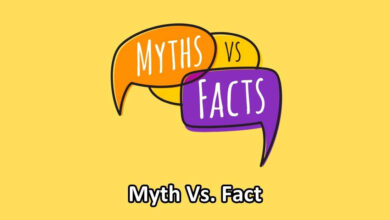Are you ready to unlock the secret to a happier and more fulfilling life? Look no further than the power of positive thinking! In this blog post, we delve into the fascinating world of optimism vs pessimism, exploring how our mindset can shape every aspect of our lives. Whether you’re a glass-half-full kind of person or tend to see things through a darker lens, join us as we uncover the incredible benefits of embracing positivity and understanding its profound impact on our well-being. Get ready to embark on a transformative journey toward an extraordinary and brighter future!
Optimism Vs Pessimism (Comparison Table)
| Optimism | Pessimism |
|---|---|
| Optimism refers to a positive mindset or belief that favorable outcomes and good things are more likely to happen. | Pessimism is a negative mindset characterized by expecting unfavorable outcomes and dwelling on potential problems. |
| Optimism can be a positive influence by creating a hopeful attitude and encouraging persistence. | Pessimism can lead to fearfulness and apathy, hindering progress. |
| Optimists tend to view life more positively, focusing on the potential for positive outcomes. | Pessimists tend to fixate on the negatives of any situation, seeing problems rather than possibilities. |
| Optimists actively seek solutions to problems and are more likely to persevere in finding resolutions. | Pessimists may give up more easily when faced with difficulties, lacking the motivation to find solutions. |
| An optimistic person expects good things to happen and maintain a positive outlook on future events. | A pessimistic person expects negative outcomes and anticipates disappointment or failure, which can lead to self-fulfilling prophecies. |
| An optimistic person usually takes setbacks as an opportunity for growth and learning. | A pessimistic person may become overwhelmed by setbacks, leading to decreased motivation and reluctance to try again. |
| An optimist will face challenges with a positive attitude and determination, seeking opportunities for personal growth. | A pessimist may be more likely to give up easily, perceiving challenges as insurmountable obstacles. |
Optimism Vs Pessimism : What are They?
Optimism is a mindset or attitude characterized by hope and positivity. Optimists believe that good things will happen and expect good outcomes in the future. They are often upbeat, and cheerful, and look at life from a positive perspective.
Pessimism is an outlook on life characterized by pessimism, cynicism, and negative thinking. Pessimists generally believe that bad things are more likely to happen than good things, and that life is ultimately unfulfilling or pointless. They may also be quick to point out the flaws or potential problems with situations and struggle to see potential solutions or positives.
Optimistic Vs Pessimistic : What are They?
Optimistic is actually an adjective of the noun optimism which refers to a hopeful and confident outlook on life. It is the belief that good outcomes will come despite setbacks or other obstacles. A person can be optimistic in their attitude, behavior, and outlook, believing that things will eventually go their way.
Pessimistic, on the other hand, is an adjective of the noun pessimism which refers to an outlook on life that is negative and gloomy. It is the belief that bad outcomes will outnumber the good ones. A person can be pessimistic in their attitude, behavior, and outlook, expecting the worst possible outcome or believing that nothing will ever work out for them. In more simple words, pessimists often expect the worst possible outcome from any situation.
Understanding Optimism and Pessimism With Example
When it comes to optimism vs. pessimism, it’s important to understand the difference between the two. Optimism is defined as a positive attitude towards life, whereas pessimism is defined as a negative attitude towards life.
To give an example of optimism vs pessimism, let’s say you’re about to take a big exam that will determine your future. An optimist would say something like “I studied hard and I know I can do this!” whereas a pessimist would say “There’s no way I can pass this, I’m going to fail for sure.” As you can see, the optimist has a positive outlook on the situation and believes they will succeed, while the pessimist has a negative outlook and believes they will fail.
So why is it important to understand the difference between optimism and pessimism? Because your outlook on life can have a huge impact on your overall happiness and success. If you’re constantly pessimistic, you’ll likely find yourself feeling down more often than not. On the other hand, if you try to be more optimistic, you may find that your mood improves and you start achieving your goals more often.
Of course, it’s not always easy to be optimistic all the time, but it’s important to try. Whenever you find yourself feeling down, remind yourself that you can do anything you set your mind to and that success is possible with hard work and dedication.
Key Differences Between Optimism and Pessimism
- Influence: Optimism can be a positive influence by creating a hopeful attitude and encouraging persistence, whereas pessimism can lead to fearfulness and apathy.
- Attitude: Optimists tend to view life more positively, while pessimists tend to focus on the negatives of any situation.
- Problem-Solving: Optimists actively seek solutions to problems and are more likely to persevere in finding resolutions. On the other hand, pessimists may give up more easily when faced with difficulties, lacking the motivation to find solutions.
- Expectations: An optimistic person expects good things to happen, while a pessimistic person expects negative outcomes and anticipates disappointment or failure.
- Reaction: An optimistic person usually takes setbacks as an opportunity for growth, while a pessimistic person may become overwhelmed by them and give up quickly.
- Challenges: An optimistic person will face challenges with a positive attitude and determination, while a pessimist may be more likely to give up easily.
Strategies to Develop and Maintain a Positive Attitude
There are many strategies that you can employ to develop and maintain a positive attitude. Some of these are briefly explained below:
1. Develop an “attitude of gratitude.” Be thankful for the good things in your life, no matter how small they may seem. This will help to increase your overall sense of happiness and well-being.
2. Practice positive self-talk. When you catch yourself thinking negative thoughts, make a conscious effort to switch to more positive ones. For example, instead of telling yourself “I can’t do this,” say “I can do this!”
3. Set realistic goals for yourself and strive to accomplish them. Having something to work towards will give you a sense of purpose and keep you motivated.
4. Seek out social support from family and friends. Surrounding yourself with positive people will help to improve your own outlook on life.
5. Take care of yourself physically by eating healthy foods, exercising regularly, and getting enough sleep. Taking care of your body will also help to improve your mental and emotional state
How Negative Thinking Impacts Your Life
Negative thinking can have a number of negative impacts on your life. It can lead to increased stress and anxiety, and can make it more difficult to cope with day-to-day challenges. Negative thinking can also make it more difficult to achieve your goals, as it can lead to reduced motivation and effort. Additionally, negative thinking can impact your physical health, as it can lead to increased levels of stress hormones in the body which can contribute to a number of health problems.
Conclusion
We hope this article has shown you the power of positive thinking and how it can help to improve your life. No matter if you are an optimist or a pessimist, understanding the differences between these two mindsets is essential for finding balance in your life. When used properly, optimism and pessimism can work together to create a healthy outlook on life that will allow you to tackle any situation with confidence and resilience. So take some time today to reflect on what type of mindset you have and how it affects your daily decisions – because in the end, it’s up to us to decide which one will reign supreme!



